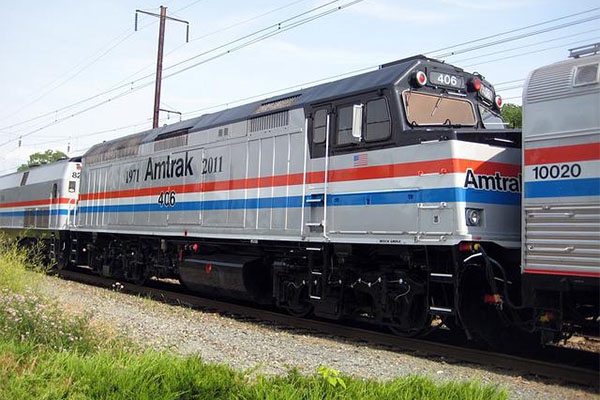Faster than a speeding locomotive!
That’s the only way I can describe reader response to my recent column on AMTRAK (Tuesday, December 14, 1999) and its thirty-year record of losses and taxpayer subsidy. Here are some samples:
“I believe that you made an apples to oranges comparison between AMTRAK and Southwest Airlines,” Les Clark wrote. “I wonder how well Southwest, or any airline, would fare if they had to pay the full costs of their terminals and the full cost of their traffic control. Railroads have always been faced with this uneven playing field. Let government subsidize AMTRAK as they do its competitors and I think you would see some totally different figures.”
“Your article was so full of holes,” wrote D. Bingham, “that I doubt that you researched the facts any further than the financial reports that are posted on Amtrak’s home page… Another fallacy is that Airlines are cheaper than Amtrak. That depends on your destination. To many Amtrak destinations, coach fare is often cheaper than competitive airlines and from personal experience AMTRAK seating is better than the airlines with more than adequate room to stretch out. You get what you pay for: SW Airlines has “peanuts and light snacks” while AMTRAK, on long distance trains, has first class dining in the diner, in addition to a snack bar.”
“When was the last time you flew cross country on Southwest Airlines (or bus) and how comfortable was your trip?” Mike Harris asked. “Cost effective, I’m sure. What did you see on the way? How good were the peanuts? By the way, cookies or pretzels are offered on longer trips.”
Thomas Burrows wrote, “… if we had not spent this money on AMTRAK since 1971 we would not even have enough money to have funded what B-2 bombers we have today… The current national debt equals about what we have spent on nuclear weapons since 1942.”
Most responses were thoughtful, if a bit peeved. So let’s start with some basics. First, I had no cosmic purpose in writing about AMTRAK. It’s just one program that has been around for thirty years sucking up taxpayer dollars when there are clear alternatives from the private sector that work better and pay taxes. While people make dark jokes about the peanuts on Southwest, it remains that most people, most of the time, choose to travel by air. That’s a broad, clear public choice.
Second, the subsidy issue is a tough one. One reason: bogus representations. W. Graham Claytor, a former Amtrak President, once declared that each airline passenger enjoys a $42 subsidy. Closer examination, however, showed that $33 of the $42 was a “tax expenditure,” meaning that it was revenue the government “lost” due to business travel deductions. People who have lived in Washington D.C. too long often think like this because they regard all income as theirs rather than ours. No one, including people who like trains, should take such figures seriously.
In fact, the subsidy accounting issue is a gritty one. The subsidy for AMTRAK is obvious. The true subsidy costs for other forms of transportation are less obvious. Virtually all subsidies to air, bus, and automobile travel, for instance, are recovered through user fees such as fuel and ticket taxes. The only way to measure the true level of taxpayer subsidy is to net out the user fees.
Fortunately, this has been done, and more than once. My ancient AMTRAK file had summaries of four studies from three sources: the Congressional Budget Office (CBO), the Arizona Department of Transportation (ADOT), and Heritage Foundation (Semmens). Significantly, the figures are similar. Most important, the net subsidy for Amtrak is at least 100 times as large as the net subsidy for any other form of travel.
Taxpayer Subsidies Net of User Fees (in cents per passenger mile)
| Source | Amtrak | Intercity Bus | Commercial Aviation | Automobile |
| CBO 1982 | 23.60 | 0.10 | 0.20 | 0.10 |
| ADOT 1982 | 27.91 | 0.15 | 0.26 | 0.21 |
| CBO 1985 | 23.00 | 0.20 | -0.20 | -0.10 |
| Semmens 1985 | 26.70 | 0.17 | 0.16 | 0.25 |
Source: Jerome Ellig, Citizens for a Sound Economy, 1986
What about the present?
The cost of the AMTRAK subsidy for 1999 is about 18.6 cents a passenger mile. This is in addition to what passengers pay for their tickets.
Southwest Airlines, on the other hand, collects about 12.5 cents a passenger mile. From all those miles, they will pay corporate income taxes exceeding the $272 million paid in 1998 and net nearly $500 million in profits… and that’s not peanuts.
This information is distributed for education purposes, and it is not to be construed as an offer, solicitation, recommendation, or endorsement of any particular security, product, or service.
Photo: WikimediaImages from Pixabay
(c) Scott Burns, 2022
